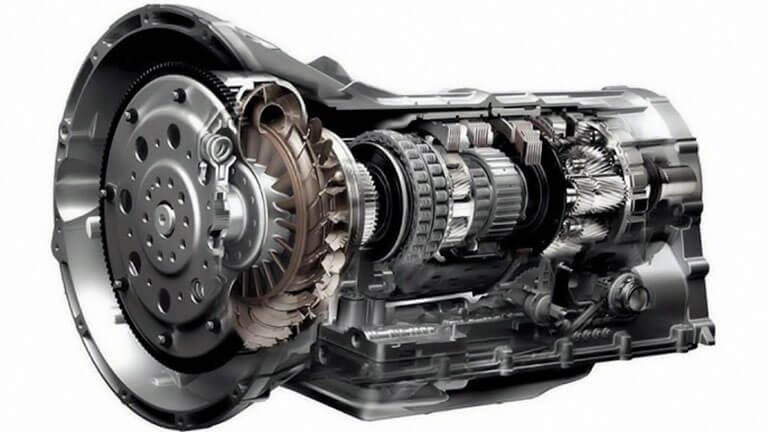Honda CVT Transmission Problems: Quick Fixes & Tips
Honda CVT transmission problems often include issues like slipping, excessive noise, and delayed acceleration. Drivers may also experience warning lights or fluid leaks.
Honda’s Continuously Variable Transmission (CVT) offers smooth driving and efficiency, but it can develop issues over time. Many owners report common problems that can impact performance and safety. Recognizing these issues early can save you from costly repairs. Understanding the signs of a malfunctioning CVT is crucial for maintaining your vehicle’s reliability.
Regular maintenance and timely diagnostics help ensure your Honda remains in top condition. This blog will explore the main Honda CVT transmission problems, their causes, and solutions to keep your vehicle running smoothly. Stay informed to protect your investment and enjoy a seamless driving experience.
Introduction To Honda Cvt

The Honda continuously variable transmission (CVT) has gained popularity. It offers smooth driving experiences and enhances fuel efficiency. Understanding its features helps owners recognize potential issues.
The Rise Of Cvt In Honda Vehicles
Honda has embraced CVT technology in many models. This shift began in the early 2000s. The following points highlight its rise:
- Improved fuel economy
- Smoother acceleration
- Less mechanical complexity
Models like the Honda Civic and Honda Accord feature CVT. These vehicles showcase the benefits of this technology.
Benefits Of Cvt Over Traditional Transmissions
Honda’s CVT offers several advantages compared to traditional transmissions:
| Feature | CVT | Traditional Transmission |
|---|---|---|
| Fuel Efficiency | Higher | Lower |
| Smooth Shifting | Yes | Clunky |
| Maintenance | Less frequent | More frequent |
Key benefits include:
- Better fuel economy
- Quieter operation
- Fewer moving parts
These features make CVT an appealing choice for many drivers.
Common Issues With Honda Cvt
The Honda CVT (Continuously Variable Transmission) is popular for its efficiency. Yet, it can face several issues. Understanding these problems helps in early detection and prevention.
Transmission Slippage
Transmission slippage occurs when the engine revs but the car doesn’t accelerate. This issue can be frustrating and dangerous. Signs of slippage include:
- Unresponsive acceleration
- Increased engine RPM
- Delayed gear changes
Causes of transmission slippage may include:
- Low transmission fluid levels
- Worn-out CVT belt
- Faulty transmission control module
Unusual Noises And Vibrations
Unusual noises and vibrations signal potential problems in your CVT. Common sounds include:
- Grinding noises
- Whining or buzzing sounds
- Clunking during gear changes
These noises may indicate issues like:
| Noise Type | Possible Cause |
|---|---|
| Grinding | Worn gears or bearings |
| Whining | Fluid contamination |
| Clunking | Loose or damaged mounts |
Overheating Concerns
CVT overheating can lead to severe damage. Symptoms of overheating include:
- Overheating warning light
- Burnt smell from the transmission
- Loss of power while driving
Common causes of overheating are:
- Low transmission fluid levels
- Blocked transmission cooler
- Faulty cooling system
Regular maintenance helps prevent overheating. Check fluid levels often. Address any issues promptly.
Identifying Cvt Transmission Problems
Identifying CVT transmission problems early can save time and money. Honda vehicles with CVT often show specific signs. Recognizing these signs helps prevent further damage.
Warning Signs And Symptoms
- Slipping Gears: The engine revs, but the car doesn’t accelerate.
- Unusual Noises: Grinding or whining sounds when accelerating.
- Delayed Response: Hesitation when shifting from park to drive.
- Overheating: High temperature readings on the dashboard.
- Fluid Leaks: Puddles of reddish-brown fluid under the car.
Each of these symptoms signals a potential issue with the CVT. Ignoring these signs may lead to costly repairs.
Diagnostic Tools And Techniques
Using the right tools helps diagnose CVT problems. Here are some effective methods:
| Tool/Technique | Description |
|---|---|
| OBD-II Scanner | Reads error codes from the vehicle’s computer. |
| Fluid Inspection | Checks fluid condition and level. |
| Visual Inspection | Looks for leaks, cracks, or damaged components. |
| Road Test | Tests the vehicle’s performance under various conditions. |
Regular diagnostics can catch problems early. Keep your Honda running smoothly with timely checks.
Quick Fixes For Minor Cvt Issues
Minor issues with Honda CVT transmissions can be frustrating. Thankfully, some quick fixes can help. Addressing these problems early can save time and money.
Fluid Level And Quality Check
Checking the fluid level is simple. Follow these steps:
- Park your car on a level surface.
- Start the engine and let it warm up.
- Shift through all gears to circulate the fluid.
- Check the dipstick for proper fluid level.
Ensure the fluid is clean. Look for:
- Dark color or burnt smell
- Metal flakes or debris
Change the fluid if it looks bad. Use the recommended type for your Honda model.
Resetting The Transmission Computer
A simple reset can solve many minor issues. Here’s how to reset the transmission computer:
- Disconnect the car battery.
- Wait for about 15 minutes.
- Reconnect the battery.
This process clears any stored error codes. It also resets the transmission settings.
After resetting, take the car for a test drive. Pay attention to shifting and performance.
Regular Maintenance Tips
Regular maintenance is key to preventing CVT transmission problems in your Honda. Proper care can extend the life of your vehicle’s transmission. Follow these tips to keep your CVT running smoothly.
Recommended Service Intervals
Sticking to recommended service intervals is essential. Here’s a simple table to guide you:
| Service Type | Interval |
|---|---|
| Fluid Change | Every 30,000 miles |
| Filter Replacement | Every 60,000 miles |
| Fluid Inspection | Every 15,000 miles |
Following these intervals helps maintain your CVT’s performance.
Best Practices For Cvt Longevity
Implementing best practices can significantly increase your CVT’s lifespan. Here are some effective strategies:
- Use Recommended Fluids: Always use Honda-approved CVT fluids.
- Avoid Overheating: Check coolant levels regularly.
- Drive Smoothly: Avoid hard accelerations and sudden stops.
- Monitor Performance: Watch for unusual noises or slipping.
- Regular Inspections: Have a mechanic check the CVT periodically.
These best practices will help keep your transmission in top shape.
Professional Repair Vs. Diy
Deciding between professional repair and DIY for Honda CVT transmission issues can be tough. Both options have their benefits. Knowing when to seek help is important. Understanding DIY repairs is equally crucial.
When To Seek Professional Help
Some situations clearly call for professional assistance:
- Complex Problems: Issues beyond basic maintenance.
- Warranty Coverage: Repairs under warranty must be handled by professionals.
- Safety Risks: Problems that could affect vehicle safety.
- Lack of Experience: Unfamiliarity with CVT systems can lead to mistakes.
Professional mechanics have the tools and knowledge. They can diagnose and fix problems quickly. This saves time and ensures proper repairs.
Diy Repairs: Pros And Cons
DIY repairs offer some advantages:
- Cost Savings: You save money on labor costs.
- Learning Experience: Gain valuable skills and knowledge.
- Convenience: Work on your schedule.
But DIY also has drawbacks:
- Risk of Damage: Mistakes can worsen the issue.
- Time-Consuming: Repairs may take longer than expected.
- Lack of Tools: Missing specialized tools can hinder repairs.
Think about your skills and resources before deciding.
Upgrading And Replacing Cvt Components
Honda CVT transmissions can face issues over time. Upgrading or replacing CVT components can improve performance. This process can also enhance vehicle longevity. Understanding your options is vital for successful upgrades.
Aftermarket Options
Aftermarket parts can offer great alternatives. They often provide better performance than stock components. Here are some popular aftermarket options:
- Performance CVT Belts: These belts improve power transfer.
- Heavy-Duty CVT Filters: These filters enhance fluid quality.
- Upgraded CVT Coolers: These coolers help manage heat better.
Before purchasing, check reviews and warranties. Quality aftermarket parts can save money in the long run.
Cost-effective Replacement Strategies
Replacing CVT components can be expensive. Here are strategies to reduce costs:
- Shop Around: Compare prices from different suppliers.
- Consider Used Parts: Quality used parts can save money.
- DIY Repairs: Learn basic repair skills to save on labor costs.
Use the following table to compare replacement costs:
| Component | Average Cost | Aftermarket Option |
|---|---|---|
| CVT Belt | $200 – $400 | $150 – $300 |
| CVT Filter | $50 – $100 | $30 – $70 |
| CVT Cooler | $150 – $300 | $100 – $200 |
Choosing the right replacement strategy can save money. Always prioritize quality to ensure long-term success.
Preventing Future Cvt Problems
Preventing future CVT problems is vital for your Honda’s longevity. Simple habits can save you from costly repairs. Understanding how to care for your CVT ensures smooth performance.
Driving Habits To Extend Cvt Life
Adopting safe driving habits can significantly extend the life of your CVT. Here are some effective tips:
- Avoid Rapid Acceleration: Speeding up quickly puts stress on the CVT.
- Maintain Steady Speed: Use cruise control on highways to reduce strain.
- Limit Towing: Heavy loads can overheat the transmission.
- Frequent Fluid Checks: Regularly check and change transmission fluid.
- Warm Up the Vehicle: Let your car idle for a few minutes in cold weather.
The Importance Of Warranty And Insurance
Understanding warranty and insurance can protect your investment. Consider these points:
| Type | Description |
|---|---|
| Factory Warranty | Covers CVT issues for a specific time or mileage. |
| Extended Warranty | Offers extra coverage beyond the factory warranty. |
| Insurance Coverage | Protects against accidental damage and repairs. |
Always read the warranty terms. Understand what is covered. This knowledge can save you money later.
Frequently Asked Questions
What Are Common Honda Cvt Transmission Problems?
Common issues include slipping, delayed acceleration, and unusual noises. Regular maintenance can help prevent these problems.
How To Identify Honda Cvt Issues Early?
Look for warning lights, strange sounds, or performance drops. Early detection can save costly repairs.
Can Cvt Problems Affect Fuel Efficiency?
Yes, transmission issues can lead to decreased fuel efficiency. A well-functioning CVT optimizes fuel consumption.
What Causes Honda Cvt Transmission Failure?
Causes include overheating, low fluid levels, and wear over time. Regular inspections can mitigate these risks.
How To Maintain Honda Cvt Transmission Effectively?
Regular fluid changes and timely inspections help maintain the CVT. Follow the manufacturer’s maintenance schedule for best results.
Conclusion
Honda CVT transmission issues can be frustrating for drivers. Regular maintenance and timely repairs can help mitigate these problems. Staying informed about potential signs of trouble is crucial. By understanding common issues, you can make better decisions for your vehicle.
Always consult a professional for advice tailored to your specific situation.






